Greenhouses
The Odyssey
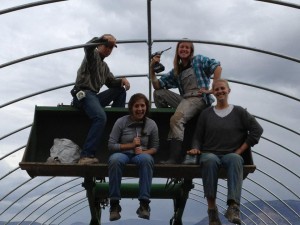
The Odyssey is the newest high tunnel greenhouse added to the farm. It is 28 ft by 64 feet. This new unheated space will allow us to get crops started earlier in the spring and keep plants going later into the fall. Instead of raised beds we constructed an Earth garden inside to grow the plants.
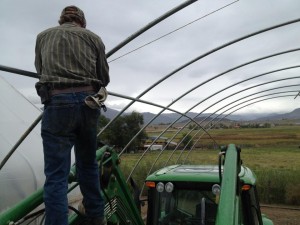
Big Greenhouse
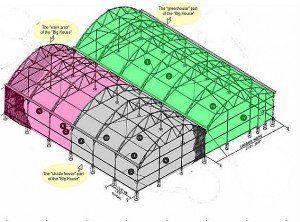
Drawing of the Big Greenhouse components
The Big greenhouse was built in 1991 and is 30 x 100 feet. Attached to it is a 24 x 50 work room and a 24x 50 foot shade area.
The Big greenhouse has a geothermal heating and cooling system that was retrofitted to one end of the greenhouse in 2005. This system pulls outside air into a 75 foot ( 6 inch) pipe that is 8 foot under ground. The air is then exhausted into the greenhouse. The effect of this system on the temperatures in the Big house is around 10 degrees Fahrenheit warmer at night and about 10 degrees cooler during the day. The system runs year round. What this geothermal system has allowed us to do in the Big greenhouse is to totally eliminate the need for propane heat to grow our crops. With the geothermal system and grow covers, we can grow year round in the Big greenhouse without any extra heat.
In the Big greenhouse we grow salad greens all year. Our main crops are Lettuce, Spinach, mustards, Arugula, Swiss chard, kale, pac choi and pea greens. We have 28 Cinder Block garden grow beds in the Big Greenhouse.
All the beds in the Big Greenhouse are build using the Cinder Bock Garden system developed by Lynn in 1999. This growing system saves time and money. All the beds are 3.5 blocks wide and all the aisles are 16 inches wide. This creates a consistent width to the beds and aisles through out the building. Therefore it is easy to interchange grow covers and also create a place for us to put in a board for sitting and picking.
Little Greenhouse
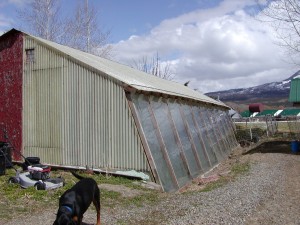
Little Greenhouse
The Little Greenhouse was the first building that we built in 1987.
We built this greenhouse to create a “home business” for me so I could raise my kids at home.
It is a pit greenhouse buried 4 feet into the ground. The back north wall is 16 inches thick rammed earth.
The ceiling on the north slope is solid, insulated roof.
The south roof is corrugated fiberglass as well as the east and west end walls.
The south wall is made of plate glass patio replacement windows covered. The south wall also has an extra insulating layer of 6 mill plastic on the inside.
This has been a great greenhouse to learn how to grow in and to extend the growing season to year round.
I barely get any frost in the building only when it goes below zero outside. I grow greens all year round.
It has no heater and only 2 exhaust fans to move the summer hot air out.
It is 40 feet long and 20 feet wide.
Tomato Greenhouse
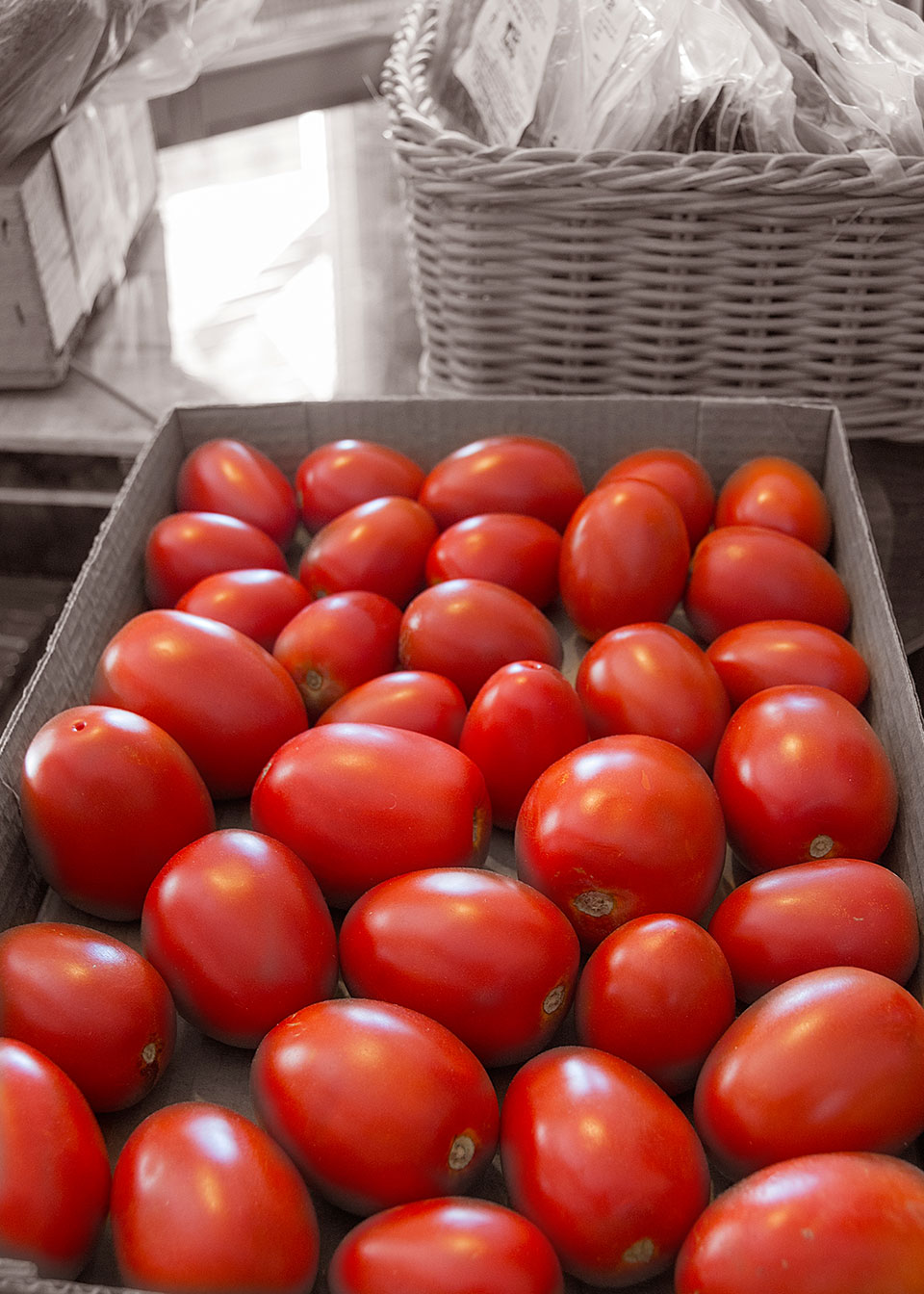
The tomato house is 30 feet by 48 feet.
It has five raised grow beds each of which are two feet wide, one foot deep and approximately 46 feet long.
The tomato greenhouse is used to grow tomatoes from March to October and greens from November through February.
The heat system for the plants is an in the soil system that runs hot water through a tube under the soil. The water recirculates back to the water heater to be rewarmed to 90º F (32.2º C) and then out to the beds when the soil temperature drops below 65º F (18.3º C).
In the winter heavy frost blankets are draped over the beds to form a small tent for the plant tops to stay warm. This system has been tested to -13.5º F (approx -25º C) without any frost damage to the greens.
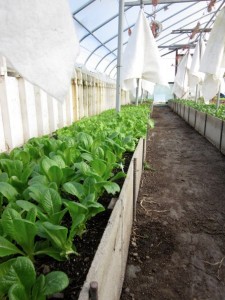
Solar Greenhouse
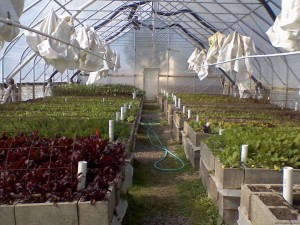 The Solar house was built in 1992. It’s original purpose was for housing trees and shrubs for our retail nursery. It is 30 feet by 60 feet. In 2004 we applied for a CSU Specialty crops grant. We wanted to change the greenhouse from a retail operation into growing salad greens with solar heat.
The Solar house was built in 1992. It’s original purpose was for housing trees and shrubs for our retail nursery. It is 30 feet by 60 feet. In 2004 we applied for a CSU Specialty crops grant. We wanted to change the greenhouse from a retail operation into growing salad greens with solar heat.
We are still joyfully using the system and are growing many greens in the winter. By March the building is so warm we switch to growing green beans for a early spring crop.
